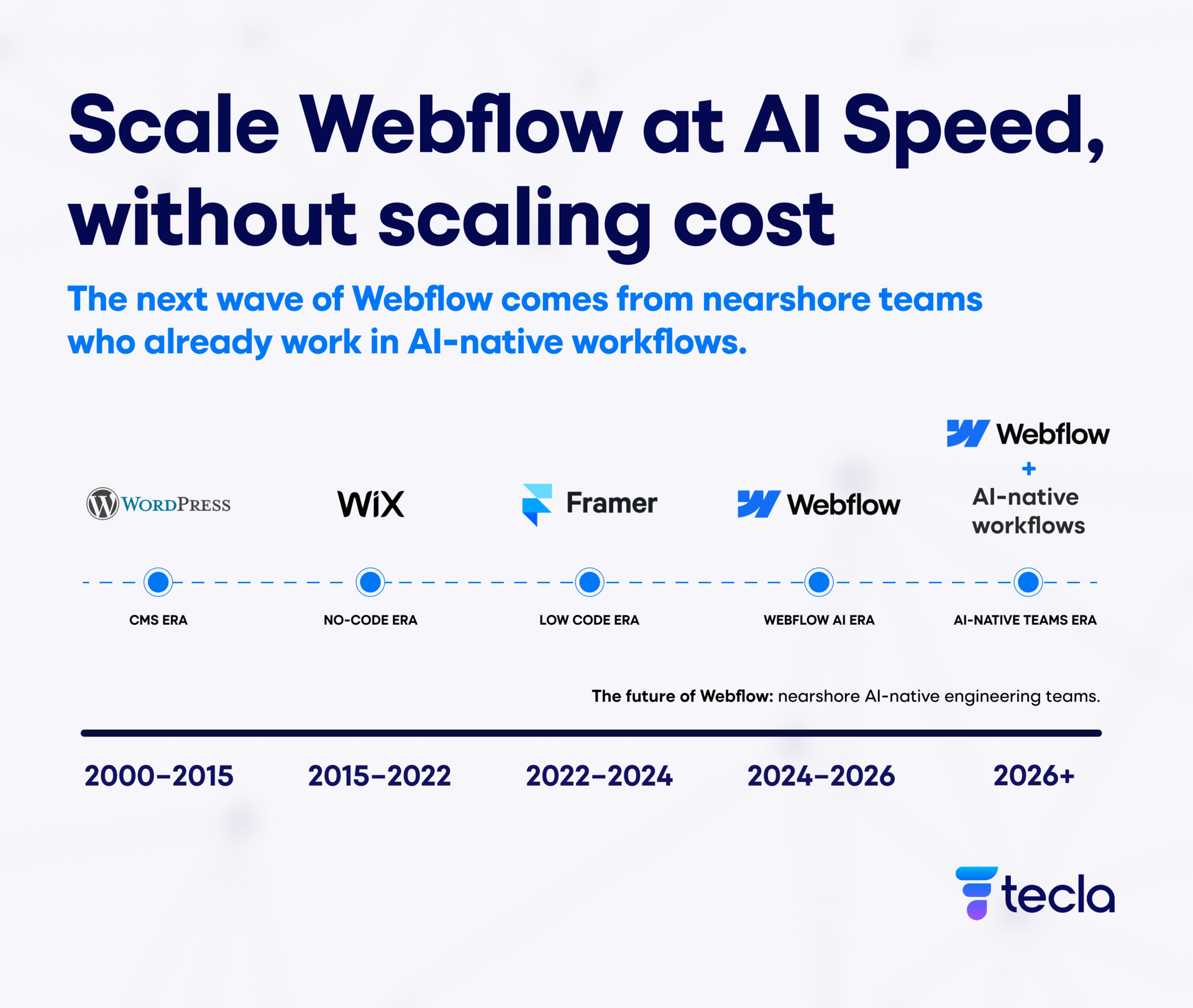“If I can describe it, Webflow can build it. If I don’t like it, I just say so. It fixes itself.”
This issue of Redeployed is brought to you by Tecla: Webflow is no longer just a builder. It’s a co-pilot. Tecla helps you hire Webflow developers who already know how to work with AI, not against it. Real-time, on-brand, and in sync with your team.
Webflow used to be a design tool. Then it became a builder. Now, it is becoming a brain.
With its latest release, Webflow is rolling out a reimagined AI Assistant, plugging AI agents directly into its MCP server, and offering real-time site optimization suggestions. The update isn’t just about new features. It’s about a shift in capability.
This version of Webflow doesn’t just help you build. It helps you improve. It sees your design. It understands your structure. It critiques your copy. It nudges you toward better performance, stronger SEO, and higher conversion.
And it is doing it without asking your team.
Webflow’s AI is Now a Full-Stack Partner
The update reads like a wishlist from a head of growth:
A smarter assistant that adapts to your design system
SEO insights injected directly into your build flow
Live AI agents that can inspect site data, audit components, and recommend updates in real time
That last point matters most. By integrating AI into the Webflow MCP (multi-connection platform) layer, the system now allows agents to act on actual site state, not just static design files. This brings something dangerously close to an autonomous co-builder.
Imagine a tool that not only helps you scaffold the site, but also flags your poor Lighthouse score, rewrites your meta tags, and reorganizes your page hierarchy. All while you’re focused on the visual layer.
We’re no longer talking about prompts. We’re talking about performance feedback loops. Embedded. Automated. Alive.
What This Means for Engineering and Design Teams
The shift isn’t subtle. It’s systemic.
If you’re leading a front-end, growth, or platform team, your tooling assumptions are now out of date. Webflow’s newest capabilities inch closer to owning the full digital presence pipeline, from ideation to deployment to optimization.
This creates new leverage. But also, new tensions.
Designers can now self-serve with a tool that understands conversion best practices. Marketers can A/B test components directly, no eng tickets required. And AI agents embedded in the MCP can suggest architectural improvements before a developer even opens the site.
Do you let that happen?
Or do you enforce guardrails?
The answer depends on your risk tolerance and how decentralized your org wants to be. Some teams will embrace this fully, treating Webflow AI as a member of the growth squad. Others will restrict it to prototyping and run final deployments through an engineering-controlled pipeline.
The teams keeping up with this shift aren’t just experimenting with AI, they’re hiring for it. As Webflow evolves into an intelligent design and optimization layer, many growth and platform leads are bringing in senior Webflow developers who already know how to work in this hybrid environment. The most effective teams pair AI-augmented site tooling with nearshore engineers who can design, build, and iterate in Webflow natively, with the speed and fluency today’s AI loop demands. See how these teams are scaling Webflow output without scaling cost.
Either way, you need a policy. Because the tools are not waiting.
We’re Not in Static Land Anymore
Webflow’s move is part of a broader trend: dynamic optimization embedded in the tools where people already work. AI agents aren’t a separate product anymore. They are the layer underneath the canvas.
And if Webflow continues down this path, it won’t just compete with other no-code tools. It will begin to overlap with A/B testing platforms, CMS systems, even junior growth engineers.
That’s the part most teams haven’t planned for.
We used to ask, “Who builds the site?”
Now the question is: “Who runs it after the AI shows up?”
More to come…
Recommended Reads
✔️ Webflow jumps into the crowded vibe‑coding market with its own all‑singing, all‑dancing AI code generation tool (Tech Radar)
✔️ Advancing Webflow AI (Webflow)
✔️ 7 Best AI Website Builders for Designers & Creators (We Do Flow)
– Gino Ferrand, Founder @ Tecla


